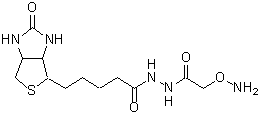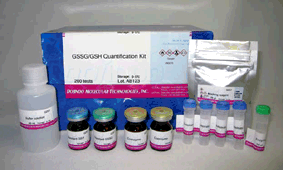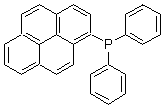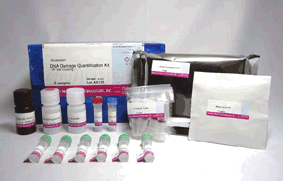ARP(Aldehyde Reactive Probe)

Stress Marker Detection
-
Product codeA305 ARP(Aldehyde Reactive Probe)
-
CAS No.139585-03-8
-
Chemical nameN-(Aminooxyacetyl)-N'-biotinylhydrazine
-
MWC12H21N5O4S=331.39
| Unit size | Price | Item Code |
|---|---|---|
| 10 mg | $256.00 | A305-10 |
| 25 mg | $519.00 | A305-12 |
Product Description
Aldehyde reactive probe (ARP) is used to detect abasic sites (AP sites, depurine/depyrimidine sites) in DNA because of its aldehyde-specific reactivity. ARP reacts with aldehyde and ketone groups, and it adds biotin to AP sites in DNA. The biotin-tagged DNA is then detected using peroxidase-labeled avidin and oxidative chromogenic dyes. The ARP method has been used to detect less than 1 AP site in 1×104 nucleotides of DNA. Dojindo offers a DNA Damage Quantification Kit (Product Code: DK02) containing all the reagents and components necessary to determine 1 to 40 ARP sites per 1×105 base pairs. ARP is highly soluble in water and the stock solution can be stored at 4ºC for one year without significant loss of reactivity .
.
Technical info
1. Prepare 10 mM ARP with water.
2. Adjust the DNA concentration to 100 μg per ml with TE buffer (pH 7.4).
3. Mix equal volumes of the DNA and ARP solutions and incubate at 37ºC for 1 hour.
4. Isolate the ARP-labeled DNA using either ethanol precipitation or membrane filtration tube.
5. Dissolve the DNA pellet in TE to prepare 10-100 μg per ml solution. Lot.4
References
1) R. Rago, J. Mitchen and G. Wilding, "DNA Fluorometric Assay in 96-well Tissue Culture Plates Using Hoechst 33258 after Cell Lysis by Freezing in Distilled Water", Anal. Biochem., 1990, 191, 31.
2) K. Kubo, H. Ide, S. S. Wallace and Y. W. Kow, "A Novel, Sensitive, and Specific Assay for Abasic Sites, The Most Commonly Produced DNA Lesion", Biochemistry, 1992, 31, 3703.
3) H. Ide, K. Akamatsu, Y. Kimura, K. Michiue, K. Makino, A. Asaeda, Y. Takamori and K. Kubo, "Synthesis and Damage Specificity of a Novel Probe for the Detection of Abasic Sites in DNA", Biochemistry, 1993, 32, 8276.
4) M. Yao and Y. W. Kow, "Strand-specific Cleavage of Mismatch-containig DNA by Deoxyinosine 3'-Endonuclease from Escherichia coli", J. Biol. Chem., 1994, 269, 31390.
5) T. Shida, M. Noda and J. Sekiguchi, "The recognition of DNA containning AP-site by E. coli endonuclease IV(exonuclease)", Nucleic Acids Symposium Series, 1995, 34, 87.
6) H. B. Sun, L. Qian and H. Yokota, "Detection of abasic sites on individual DNA molecules using atomic force microscopy", Anal. Chem., 2001, 73, 2229.
7) J. Nakamura, J. A. Swenberg, "Endogenous Apurinic/apyrimidinic Sites in Genomic DNA of Mammalian Tissues", Cancer Res., 1999, 59, 2522.
8) Y. W. Kow and A. Dare, "Detection of Abasic Sites and Oxidative DNA Base Damage using an ELISA-like Assay", METHODS, 2000, 22, 164.
9) L. Yan, A. Bulgar, Y. Miao, V. Mahajan, J. R. Donze, S. L. Gerson and L. Liu, "Combined Treatment with Temozolomide and Methoxyamine: Blocking Apurininc/Pyrimidinic Site Repair Coupled with Targeting Topoisomerase II", Clin. Cancer Res., 2007, 13, 1532.
10) P. D. Chastain, II, J. Nakamura, J. Swenberg and D. Kaufman, "Nonrandom AP site distribution in highly proliferative cells", FASEB J., 2006, 20(14), 2612.
Handling and storage condition
| Appearance: | White powder |
|---|---|
| Purity (HPLC): | ≧ 95.0 % |
| Solubility in water: | To pass test (clear, colorless) |
| IR spectrum: | Authentic |
| NMR spectrum: | Authentic |
| -20°C |











